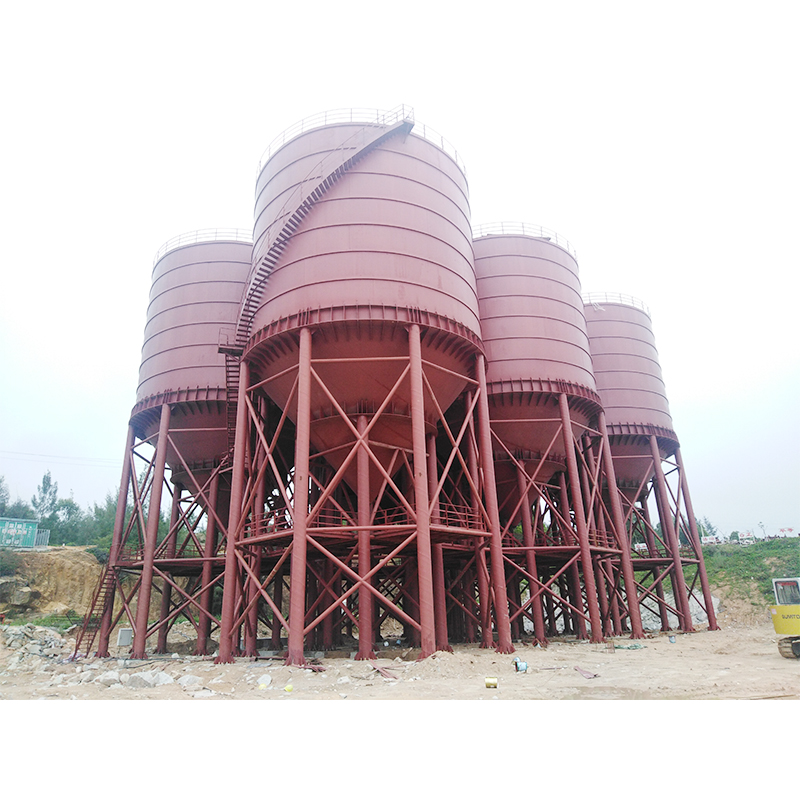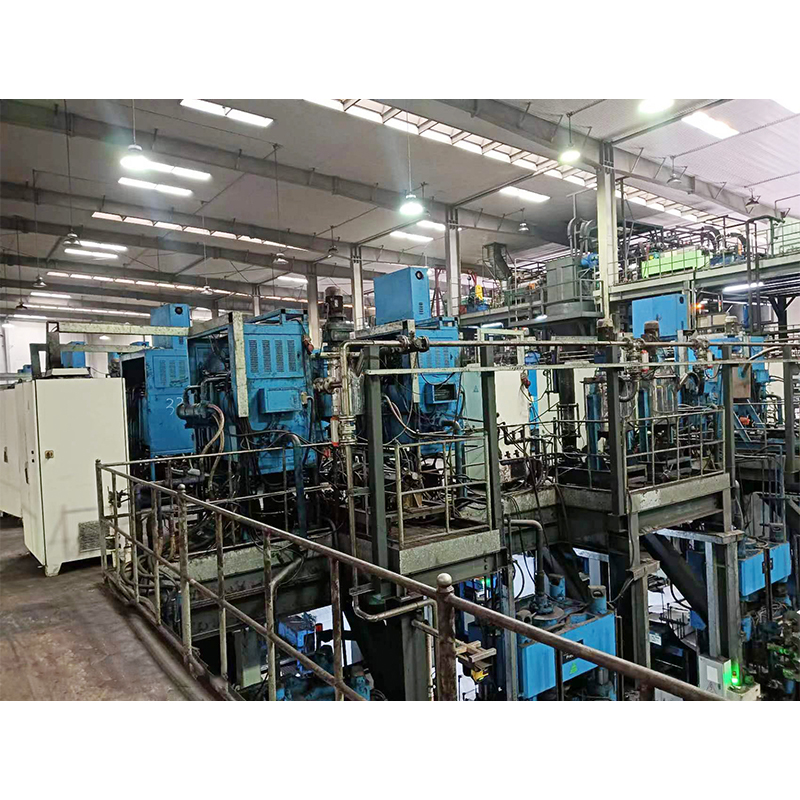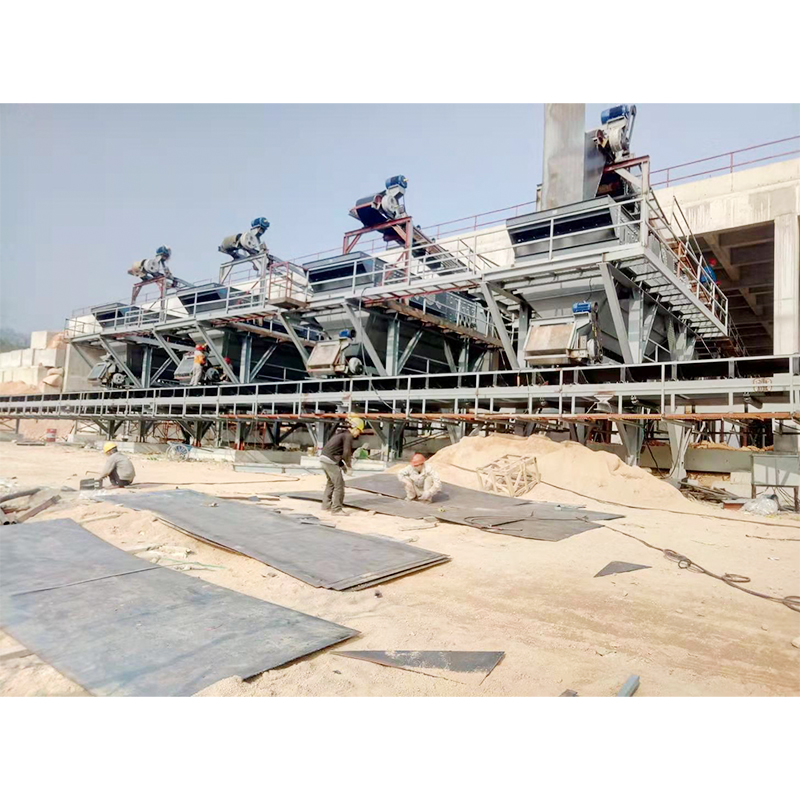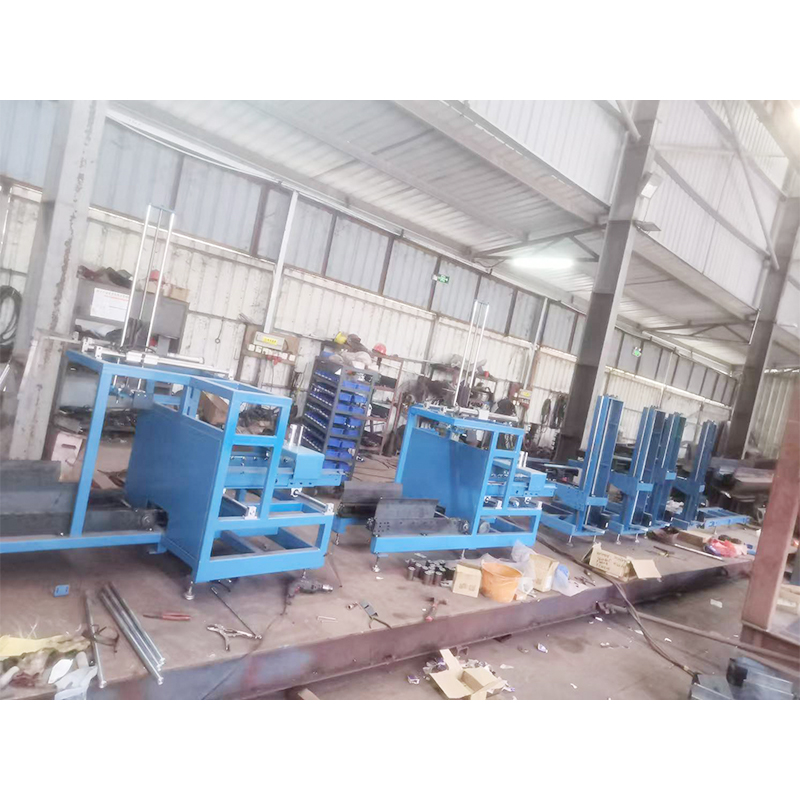How can a crushing production line optimally select and match the main equipment based on raw material characteristics?
Release Time : 2025-08-26
The selection and matching of the main equipment in a crushing production line is a key factor in determining the overall system's operating efficiency, energy consumption, maintenance costs, and finished product quality. Different raw materials exhibit significant differences in physical properties, which directly impact the effectiveness of the crushing process and the adaptability of the equipment. Scientific selection is not simply based on production volume requirements; it is a systematic process based on a comprehensive analysis of the raw materials.
Raw material hardness is the primary factor influencing the selection of crushing equipment. High-hardness materials exert significant impact and wear on the crusher, necessitating equipment with high compressive strength and robust structure. For such materials, jaw crushers are often used for primary crushing due to their powerful primary crushing capacity and stable structure, effectively reducing large lumps to a size suitable for subsequent processing. For subsequent secondary and tertiary crushing, cone crushers, with their laminated crushing principle and excellent wear resistance, are ideal for handling high-hardness materials. Their crushing chamber design enables multiple compression and grinding steps, resulting in a uniformly shaped finished product.
Impact crushers offer unique advantages when raw materials are moderately hard and somewhat brittle. They utilize a high-speed rotor to drive hammers to impact the material, causing it to repeatedly strike the liner within the crushing chamber, achieving both crushing and shaping. This crushing method is particularly suitable for medium-hard rocks such as limestone and dolomite, producing high-quality aggregate with a high cubic content and minimal flakes. Another feature of impact crushers is their adjustable discharge size. By adjusting the rotor speed or the gap between the impact plates, the finished particle size can be flexibly controlled to meet different grading requirements.
Material moisture also influences equipment selection. Highly moist materials are prone to adhesion and clogging during the crushing process, hindering continuous operation. For such raw materials, equipment with an open crushing chamber and smooth discharge should be preferred. Jaw crushers are highly adaptable when handling wet materials, thanks to their simple structure and large discharge opening, which is less prone to clogging. If a cone crusher or impact crusher is used, enhanced dehumidification or screening pretreatment is required to prevent material accumulation within the chamber. Dry production processes may face challenges in extremely humid environments, and the need to incorporate screening pretreatment or adjust the crushing process should be evaluated. The particle size distribution of the raw material determines the optimal coordination of the crushing stages. If the feed particle size varies significantly, multiple crushing stages are necessary to achieve progressive reduction and avoid overloading a single piece of equipment. The primary focus of the coarse crushing stage is efficient crushing of large lumps, the secondary crushing stage emphasizes particle size uniformity, and the tertiary crushing stage focuses on finished product shaping and gradation optimization. The output size of each crushing stage should be precisely matched to the feed requirements of the next stage, ensuring smooth energy transfer and material transition, minimizing over- or under-crushing.
Furthermore, the abrasiveness of the raw material directly impacts the life of wear-resistant components. Highly abrasive materials accelerate wear of key components such as jaw plates, mortar walls, and blow bars, increasing maintenance frequency and costs. Therefore, equipment with higher-grade wear-resistant materials and more rational structural design should be selected. Automatic lubrication and monitoring systems should also be considered to provide real-time monitoring of equipment operating status.
In summary, selecting the main equipment for a crushing production line is a comprehensive decision that requires comprehensive consideration of multiple factors, including raw material hardness, moisture content, particle size, and abrasiveness. By scientifically matching jaw crushers, cone crushers, impact crushers and other equipment, and building an efficient, stable and low-consumption crushing process, we can ensure that the production line can continuously output high-quality finished products under complex working conditions and meet the stringent requirements of the modern sand and gravel aggregate and resource recycling industries.
Raw material hardness is the primary factor influencing the selection of crushing equipment. High-hardness materials exert significant impact and wear on the crusher, necessitating equipment with high compressive strength and robust structure. For such materials, jaw crushers are often used for primary crushing due to their powerful primary crushing capacity and stable structure, effectively reducing large lumps to a size suitable for subsequent processing. For subsequent secondary and tertiary crushing, cone crushers, with their laminated crushing principle and excellent wear resistance, are ideal for handling high-hardness materials. Their crushing chamber design enables multiple compression and grinding steps, resulting in a uniformly shaped finished product.
Impact crushers offer unique advantages when raw materials are moderately hard and somewhat brittle. They utilize a high-speed rotor to drive hammers to impact the material, causing it to repeatedly strike the liner within the crushing chamber, achieving both crushing and shaping. This crushing method is particularly suitable for medium-hard rocks such as limestone and dolomite, producing high-quality aggregate with a high cubic content and minimal flakes. Another feature of impact crushers is their adjustable discharge size. By adjusting the rotor speed or the gap between the impact plates, the finished particle size can be flexibly controlled to meet different grading requirements.
Material moisture also influences equipment selection. Highly moist materials are prone to adhesion and clogging during the crushing process, hindering continuous operation. For such raw materials, equipment with an open crushing chamber and smooth discharge should be preferred. Jaw crushers are highly adaptable when handling wet materials, thanks to their simple structure and large discharge opening, which is less prone to clogging. If a cone crusher or impact crusher is used, enhanced dehumidification or screening pretreatment is required to prevent material accumulation within the chamber. Dry production processes may face challenges in extremely humid environments, and the need to incorporate screening pretreatment or adjust the crushing process should be evaluated. The particle size distribution of the raw material determines the optimal coordination of the crushing stages. If the feed particle size varies significantly, multiple crushing stages are necessary to achieve progressive reduction and avoid overloading a single piece of equipment. The primary focus of the coarse crushing stage is efficient crushing of large lumps, the secondary crushing stage emphasizes particle size uniformity, and the tertiary crushing stage focuses on finished product shaping and gradation optimization. The output size of each crushing stage should be precisely matched to the feed requirements of the next stage, ensuring smooth energy transfer and material transition, minimizing over- or under-crushing.
Furthermore, the abrasiveness of the raw material directly impacts the life of wear-resistant components. Highly abrasive materials accelerate wear of key components such as jaw plates, mortar walls, and blow bars, increasing maintenance frequency and costs. Therefore, equipment with higher-grade wear-resistant materials and more rational structural design should be selected. Automatic lubrication and monitoring systems should also be considered to provide real-time monitoring of equipment operating status.
In summary, selecting the main equipment for a crushing production line is a comprehensive decision that requires comprehensive consideration of multiple factors, including raw material hardness, moisture content, particle size, and abrasiveness. By scientifically matching jaw crushers, cone crushers, impact crushers and other equipment, and building an efficient, stable and low-consumption crushing process, we can ensure that the production line can continuously output high-quality finished products under complex working conditions and meet the stringent requirements of the modern sand and gravel aggregate and resource recycling industries.







